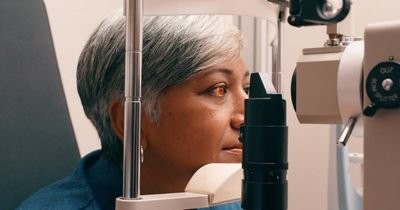Keratoconus Treatment and Surgery
What is Keratoconus?
Keratoconus is a condition that affects the cornea, which is the clear outer layer of the eye that helps to focus light onto the retina. This condition causes the cornea to thin and bulge into a cone-like shape, which can distort vision and cause significant discomfort.
Keratoconus is a progressive condition that affects the cornea of the eye. It is usually diagnosed in young adults, with symptoms typically developing in the late teenage years or early 20s. In most cases, both eyes are affected, although the severity of the condition can vary between eyes.
The exact cause of keratoconus is not well understood, but it is believed to be a combination of genetic and environmental factors. Some studies suggest that excessive eye rubbing, allergies, and other inflammatory conditions may increase the risk of developing keratoconus.
Stages of Keratoconus
Keratoconus progresses through different stages as the cornea becomes thinner and more distorted. The stages of keratoconus are as follows:
Early Stage
In the early stages of keratoconus, the cornea may become slightly thinner and start to bulge outwards. This stage is often asymptomatic, and patients may not even realize that they have the condition. However, an eye exam can detect the changes in the cornea.
Moderate Stage
As keratoconus progresses, the cornea becomes more distorted, causing blurred and distorted vision. Patients may also experience sensitivity to light, glare, and halos around lights. Contact lenses may become less effective at correcting vision, and glasses may not be sufficient.
Advanced Stage
In the advanced stages of keratoconus, the cornea becomes severely distorted, causing significant visual impairment. Patients may experience double vision, ghost images, and other vision distortions. At this stage, contact lenses may not be effective, and surgery may be necessary.
Treatment Options for Keratoconus
The treatment options for keratoconus depend on the severity of the condition. In the early stages, glasses or soft contact lenses may be sufficient to correct vision. As the condition progresses, other treatments may be necessary.
Rigid Gas Permeable (RGP) Contact Lenses
RGP lenses are designed to provide a smooth, even surface over the distorted cornea, correcting vision and reducing discomfort. These lenses are often effective in the early to moderate stages of keratoconus.
Scleral Contact Lenses
Scleral lenses are larger than RGP lenses and provide a more stable fit over the cornea. They are often used in advanced cases of keratoconus when other treatments have failed.
Corneal Collagen Cross-Linking
Corneal collagen cross-linking is a procedure that strengthens the cornea by using UV light and a photosensitizer to create new cross-links between the collagen fibers. This procedure can slow or halt the progression of keratoconus and prevent further vision loss.
Intacs
Intacs are small plastic inserts that are surgically implanted into the cornea to help reshape it. This procedure can improve vision and reduce the need for contact lenses or glasses.
Corneal Transplant
In severe cases of keratoconus, a corneal transplant may be necessary. During this procedure, the damaged cornea is removed and replaced with a healthy donor cornea.
By having regular eye exams with your ophthalmologist, you will be informed if you have any signs or risk for keratoconus.
Schedule an eye exam today with Colorado Eye Surgeons.

